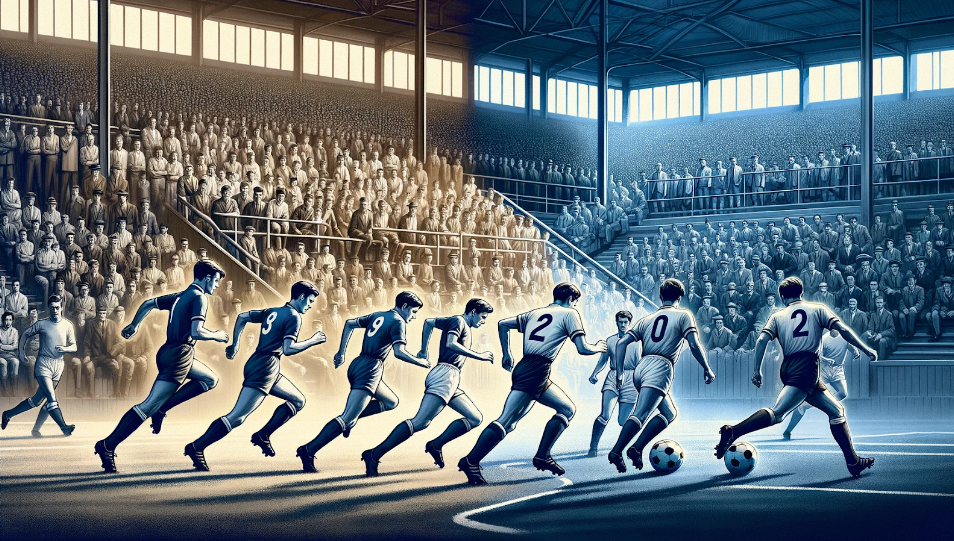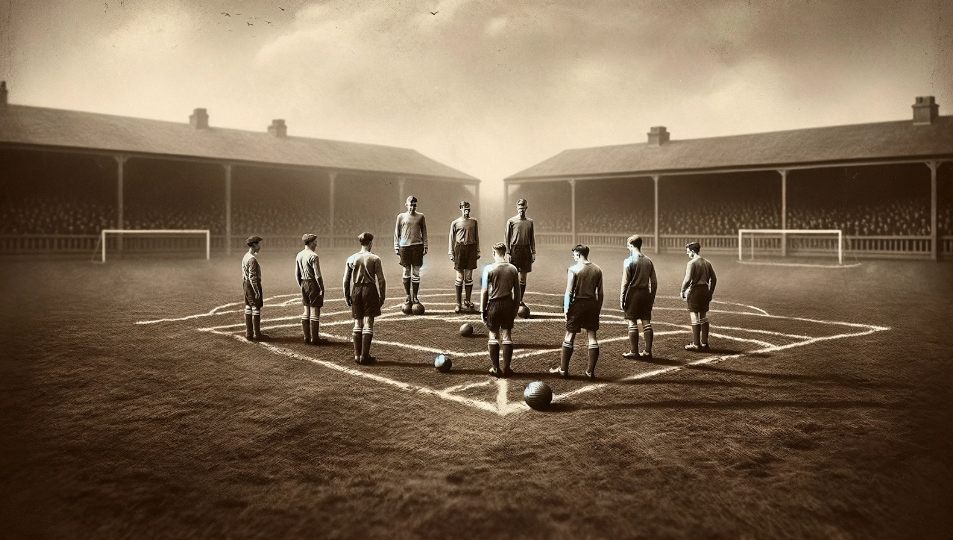
The Foundations of Football Strategy
Early Days and Simple FormationsThe history of football tactics can be traced back to the early days of the sport when formations were simple and straightforward. The most basic formation, the 2-3-5 (or the Pyramid), dominated the early tactical landscape. This formation emphasized attack, with five forwards, three midfielders to support them, and two defenders along with the goalkeeper to guard the back.
Evolution of Defensive Play
As the game developed, so did the understanding of defensive play. The introduction of the WM formation in the 1920s and 1930s marked a significant shift. This system, developed by Herbert Chapman of Arsenal, was a response to the changing rules of the game and introduced a more balanced approach between defense and attack.
The Tactical Revolution
1. The Total Football Approach: The 1970s saw the rise of Total Football, a revolutionary approach pioneered by the Dutch. This strategy emphasized fluidity, with players switching positions seamlessly, thus creating a dynamic and unpredictable style of play. It challenged the rigid formations of the past and required players to be versatile and highly skilled.
2. Italian Catenaccio: Contrasting the Total Football approach was the Italian Catenaccio, or "chain" strategy, focused on strong defense and quick counter-attacks. This tactic relied on a solid defensive line, a sweeper, or libero, behind them, and a reliance on one or two forwards to score from counter-attacks. It was pragmatic and often criticized for being overly defensive, yet it proved highly effective for teams like Inter Milan in the 1960s.

Modern Tactical Innovations
The modern era of football has seen a blend of past tactics with new innovations. Managers like Pep Guardiola and Jürgen Klopp have developed styles that, while rooted in historical strategies, are adapted to the pace and physicality of contemporary football.Guardiola’s Tiki-Taka
Guardiola's Tiki-Taka, developed during his time at Barcelona, emphasized possession, short passing, and movement. It was a strategy that required technical skill, spatial awareness, and a high work rate from players. This approach led Barcelona to numerous titles, including the UEFA Champions League.
Klopp’s Gegenpressing
Klopp’s Gegenpressing, or counter-pressing strategy, has been a hallmark of his teams, notably Borussia Dortmund and Liverpool. The idea is simple yet demanding: immediately recover possession after losing it, thus catching the opposition off-guard. This tactic requires intense physical conditioning and a cohesive team effort.
The Role of Technology and Data Analysis
In recent years, the use of technology and data analysis has become integral to developing football tactics. Teams now have access to a wealth of data on their own performances as well as their opponents’. This information is used to tailor training, prepare for matches, and make real-time decisions during games.
Looking Ahead: The Future of Football Tactics
As we look to the future, it's clear that football tactics will continue to evolve. The integration of AI and machine learning could lead to even more personalized strategies, while advances in fitness and sports science may push the physical boundaries of what players can achieve. What remains constant, however, is the blend of creativity, innovation, and tradition that defines the tactical journey of football.In conclusion, the evolution of football tactics from simple early formations to the sophisticated strategies of today reflects the broader development of the sport itself. As football continues to captivate millions around the world, its tactical journey remains a fascinating aspect of the game, blending history, culture, and innovation.


Comments